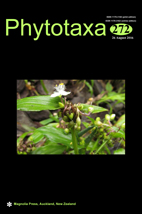Abstract
Two new species of Rudgea (Rubiaceae), R. quisquiliae and R. axilliflora, from Southeastern Brazil present true axillary inflorescences, a very distinct characteristic in the genus. Rudgea was previously characterized by the presence of usually terminal inflorescences, with pseudo-axillary inflorescences occurring in a single species, R. stipulacea. Rudgea quisquiliae is morphologically distinct within the genus by the combination of its large leaf-blades (15–33.5 × 7.5–15 cm), and axillary inflorescences. Rudgea axilliflora can be distinguished by its sheathing stipules with dorsal, glandular appendages, medium-sized leaf-blades (7–11 x 2.5–4 cm), lanceolate to elliptic, with 7–9 pairs of secondary veins, absence of domatia, axillary inflorescences and flowers with a distinctly lobed calyx. The new species were discovered in ombrophilous rainforest remnants in the south of Espírito Santo, one of the most diverse states in the Atlantic Forest biome.

